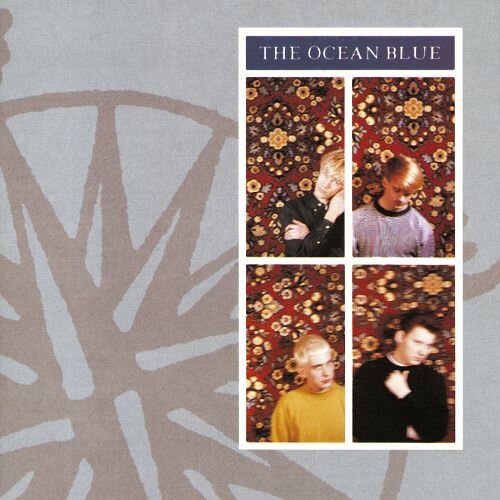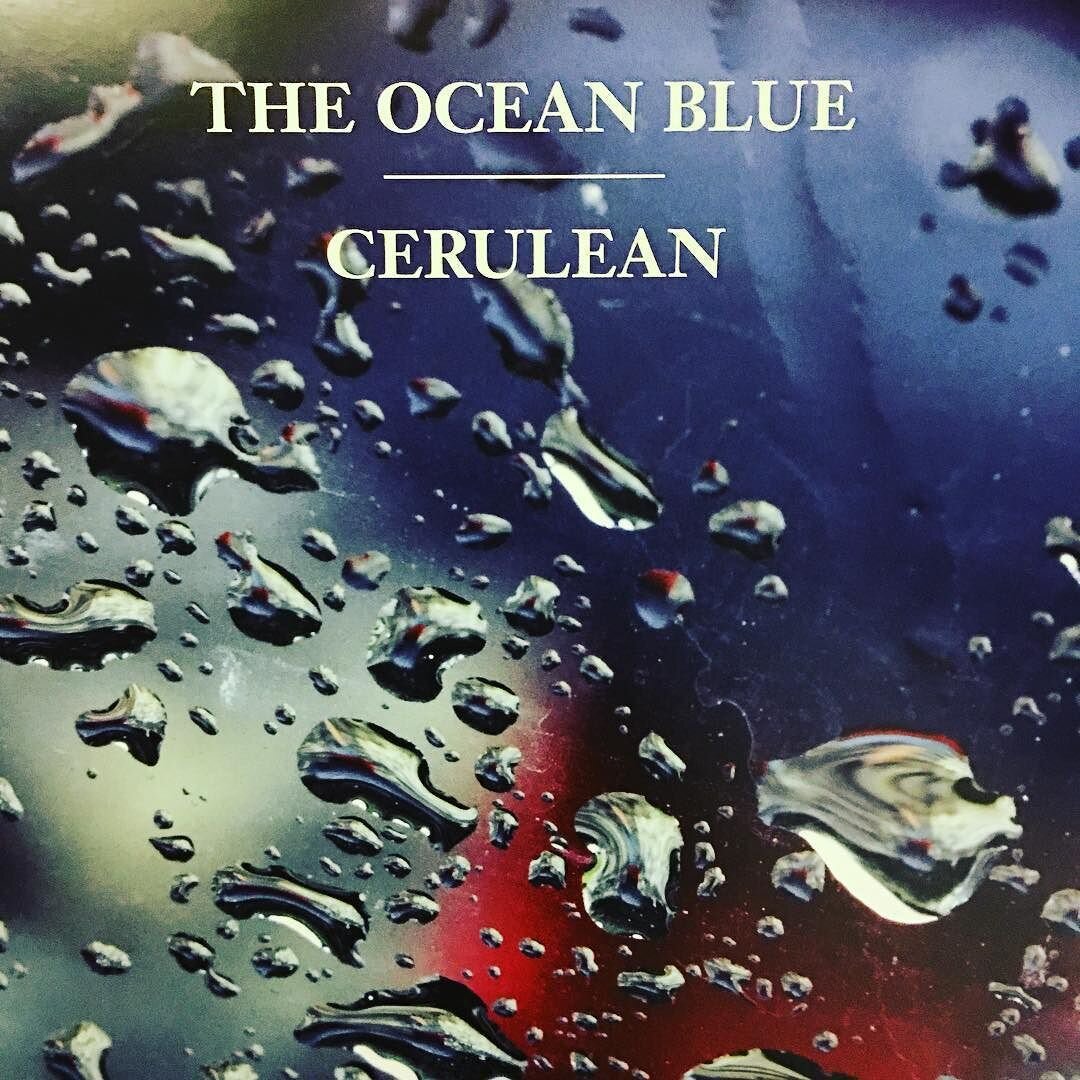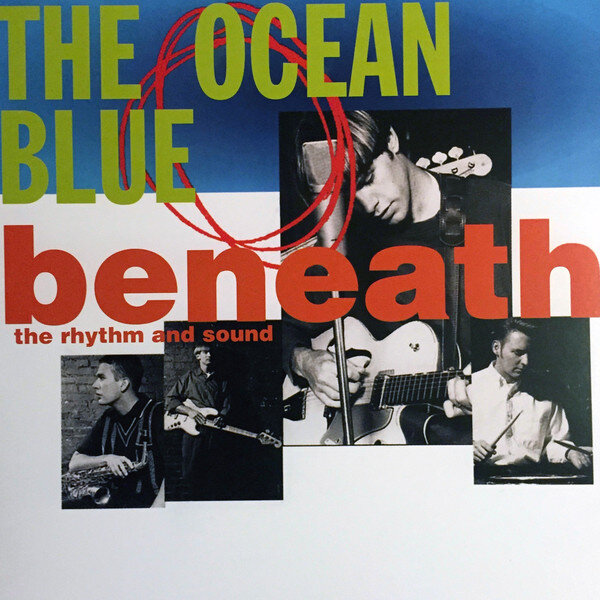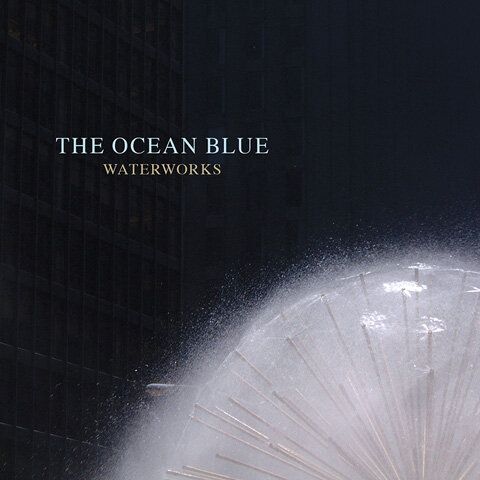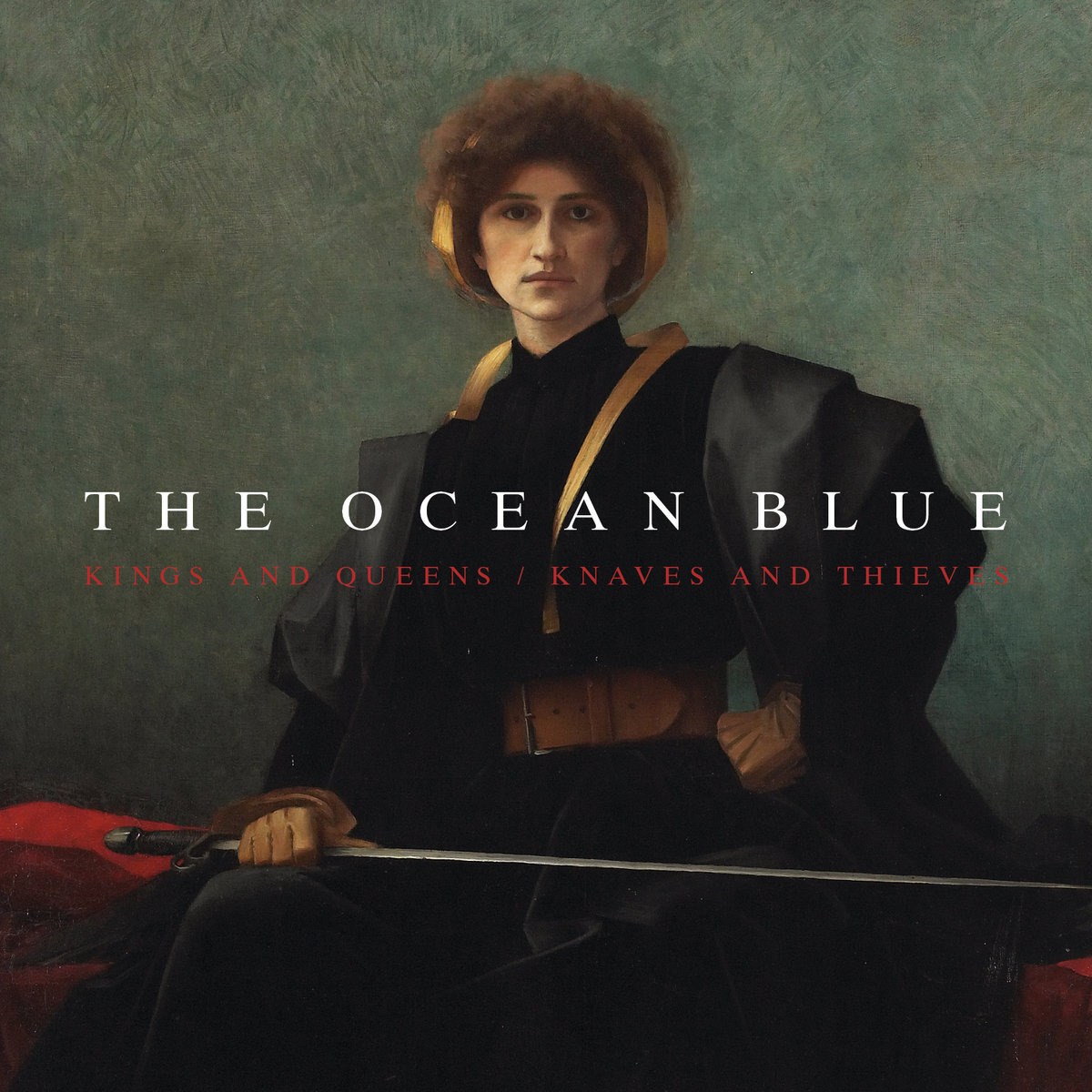Between Something and Nothing: A Retrospective of The Ocean Blue
Click below on the streaming service of your choice to listen to the playlist as you read along.
Perhaps it was pursuing a bright, blue-eyed, R&B-pop full of hooks and light guitar while the rest of the music world was exploring grungy guitar, trippy beats, electronics, or hip-hop rhythms, but the reasons for why The Ocean Blue were overlooked escape me. Alternative radio gave them some airplay in the early days and aside from a few singles, they didn’t chart very well; and while releasing nine albums over a thirty-year career, they have existed outside the popular consciousness, even in their native US. Yet, their music has felt undeniable to me, so infectious and consistent, that it has been a cruel twist of fate that they missed the chance for greater fame and fortune.
The Ocean Blue started in 1986 at a junior high school in Hershey, PA. David Schelzel, Steve Lau, Bobby Mittan, and Scott Stouffer started playing together and recorded some demos which received local attention, helped in part by fellow local band, The Innocence Mission. In 1987 Stouffer was replaced on drums by Rob Minnig and in 1988 the band caught the ear of record mogul Seymour Stein, who signed them to his Sire label with a three-record deal.
Schelzel, Minnig, Lau, & Mittan
With the band fresh out of high school, The Ocean Blue’s self-titled debut was released in 1989 just as grunge was building steam across the indie labels of the US. The sparkling, airy guitars and vocals over rich basslines and crisp drumming were out of step with the emerging scene. The album was a fantastic pop record, there wasn’t a single weak song on the LP, but it was too different for mainstream and not edgy enough for alternative audiences, and thus the band struggled to catch a wave. Their sound, and Schelzel’s mop top haircut, would seemed to have fit well with the UK pop scene and the Madchester sound in particular, yet they never gained a foothold there. The album reached #155 in the US chart and the single, “Between Something and Nothing,” reached #2 on the US Alternative chart (which started in ’88 and listed the top forty songs played on alternative radio). In Toronto, my local station CFNY placed it at #77 in their 1990 list of top singles of the year.
Two more very good albums followed in ’91 and ’93, Cerulean and Beneath the Rhythm and Sound. I had all three of those first CDs and listened to them quite a bit, thoroughly enjoying all the songs and their catchy, alt-pop sound. If there was any complaint, it was that the albums were indistinguishable from each other. While there were few weak tracks, their sound hadn’t changed as they were still exploring the punchy rhythms, smooth melodies, and light guitar flavourings heard since their arrival four years prior. If the first album hadn’t caught on, then it wasn’t surprising the next two didn’t do any better. Neither LP charted and while five of their subsequent eight singles had appeared on the US Alternative chart, sales weren’t ratcheting up. In my town, none of their tracks from Cerulean made it on CFNY’s chart for ’91 and Beneath the Rhythm and Sound placed at #82 for the top albums of ’93.
The band added guitarist Oed (pronounced ‘Ed’) Ronne while touring for their third LP over 1993-94. The song, “Crash,” from the third LP, appeared on the Naked in New York film soundtrack in 1994 and the band released their first EP, Peace and Light. It featured two tracks from the third LP, “Peace and Light,” and a live version of “Don’t Believe Everything you Hear,” along with a live cover of The Smiths’ “There Is A Light that Never Goes Out.” But success remained elusive and Sire decided not to renew them. In 1994 keyboardist and sax player Steve Lau left the band, returning them to a quartet.
Ronne, Schelzel, Mittan, & Minnig
Recording with Mercury Records and with Ronne in the studio for the first time, the band’s fourth LP in 1996, See the Ocean Blue, finally saw a shift in sound. Ronne gave them an edgier tone, moving their light pop vibe more into an alt-rock sound. However, some of their catchiness ebbed away and the album was a less consistent run through. Mercury didn’t get behind the album and neither single, “Whenever You’re Around” and “Slide,” made any inroads for the band.
The next LP was Davy Jones Locker, which was released by the band themselves in 1999. They then joined indie label, March Records and issued an EP in 2000, Denmark. The title track was a song from the album and it was joined by three new songs. Another EP followed, Ayn, in 2001 that similarly included three new songs with the title track from the album. March Records then re-released the full album in 2001. Davy Jones Locker lacked the energy and catchy hooks of their prior releases and it seemed the band was struggling to find their way forward musically. The guitar-driven trends of the latter ‘90s had fallen away and rock was in retreat among mainstream trends, and despite a strong retro-rock scene over the early 2000s, The Ocean Blue was as obscure within the music universe as ever. I admit that, personally, I had no idea they were a going concern at that point.
Rob Minnig left the band in 2001, leaving David Schelzel and Bobby Mittan as the only remaining original members. Peter Anderson joined to replace Minnig on drums. The new line-up self-released a six-song EP, Waterworks, in 2004. With Oed more prevalent in their writing, playing, and also singing his songs, and Anderson providing a more forceful, deeper feel to their beats and rhythm under the infectious melodies, the band’s sound and energy was reinvigorated and more varied than anything heard from them before. It was the strongest collection of songs they’d released since their initial trio of albums.
While the band played shows through the next few years, at times joined by sax player Allen Clapp from the band, The Orange Peels, they didn’t release new music. After 2006 they stopped touring and The Ocean Blue seemed, after twenty years, to be retired.
However, in 2010 they indicated they were back working together and recording music. It took until 2013 before they played live again and then released their first new, original music (there had been a Christmas cover song in 2010) with the single, “Sad Night, Where is the Morning?” It was followed with their first LP in fourteen years, Ultramarine. It was a solid list of tracks, modern, yet once again, as on Waterworks, captured the alt-pop spirit of their early years. The band had always had a dream pop strain to their music, at times slipping into an outright shoegaze vibe, and on this LP those sounds were more prevalent, along with a greater use of electronics to underpin the lead guitar sounds. Anderson continued to give them a more varied selection of rhythms, nowhere more so than on the tune, “Latin Blues,” in which a catchy bongo beat flavoured the song towards its title vibe.
If The Ocean Blue had been unfairly overlooked in its early years, and perhaps justifiably so in its middle years, at this point they were likely resigned to their fate as a niche player in the modern clamour of the music world, despite now producing some of the most polished, rich, and engaging music of their career. They were getting appreciation from critics and able to sustain a regular touring schedule. Now issuing music through Korda Records, Waterworks was re-released in 2014 but, with two additional songs, as an LP. In 2015 the single, “City Traffic,” was released. It had been a long unreleased track in which, as a recording, first saw the light of day as an online video. That year also saw the re-release of their first three Sire albums on vinyl.
Over recent years Schelzel has played with Butch Vig’s (uber-producer and founding member of the band, Garbage) super-group collective, 5 Billion Diamonds, did some holiday music with Don Peris from Innocence Mission, and members of Ocean Blue have collaborated with other acts such as The Orange Peels.
The Ocean Blue is back once again in 2019 with a new album, Kings and Queens / Knaves and Thieves, which once again is as strong as anything they’ve released before. They remain the quartet of original members, David Schelzel, whose guitar and vocals have been the consistent thread in their sound from the beginning, and bassist Bobby Mittan, along with Oed Ronne on guitar (who also provides vocals for his songs), now with the band for twenty-five years, and drummer Peter Anderson, in his eighteenth year. The beautiful song, “Love Doesn’t Make It Easy on Us,” includes female vocals for the first time, courtesy of Allison LaBonne and Charlotte Crabtree from labelmate acts, The Owls and The Jim Ruiz Set. It’s inspiring to see them carry on with such quality music, showing their dedication to their craft despite the lack of commercial success and the attention it’s deserved. They are the very spirit of modern rock, in which the art leads the effort more than the promise of fame and fortune.
Peter Anderson, Oed Ronne, Bobby Mittan, and David Schelzel
I was inspired to do this profile after listening to their earlier music on my random playlists, and I’ve been reinvigorated to their cause by hearing their newer music. It has prompted me to book a trip from Toronto down to Detroit to catch their show next week. It will be my first time seeing them. Actually, aside from a few shows in South America over the past thirteen years where the band has discovered a fervent and sizeable fan base, I haven’t seen much evidence they’ve ever toured outside the US; further evidence of how unexposed their music has been despite its quality and, for me certainly, its enduring appeal. I hope this playlist similarly inspires you to either re-introduce yourself to them or discover them for the first time, because the musical waters are pleasant in The Ocean Blue.
The Playlist - song \ album (year)
Between Something and Nothing \ The Ocean Blue (1989)
Vanity Fair \ The Ocean Blue (1989)
The Circus Animals \ The Ocean Blue (1989)
Just Let Me Know \ The Ocean Blue (1989)
Cerulean \ Cerulean (1991)
Mercury \ Cerulean (1991)
The Planetarium Scene \ Cerulean (1991)
Ballerina Out of Control \ Cerulean (1991)
Bliss Is Unaware \ Beneath the Rhythm and Sound (1993)
Don’t Believe Everything You Hear \ Beneath the Rhythm and Sound (1993)
Cathedral Bells \ Beneath the Rhythm and Sound (1993)
Emotions Ring \ Beneath the Rhythm and Sound (1993)
Whenever You’re Around \ See the Ocean Blue (1996)
Slide \ See the Ocean Blue (1996)
10 10 Cloud Deck \ See the Ocean Blue (1996)
Bite Your Lip \ See the Ocean Blue (1996)
Denmark \ Davy Jones Locker (1999)
Bottle Yours \ Davy Jones Locker (1999)
Pedestrian \ Waterworks EP (2004)
Sunshower \ Waterworks EP (2004)
The Northern Jetstream \ Waterworks EP (2004)
Golden Girl \ Waterworks EP (2004)
Give It A Try \ Ultramarine (2013)
Latin Blues \ Ultramarine (2013)
Fast Forward Reverse \ Ultramarine (2013)
City Traffic \ non-album single (2015)
Kings and Queens \ Kings and Queens / Knaves and Thieves (2019)
Love Doesn’t Make It Easy on Us \ Kings and Queens / Knaves and Thieves (2019)
All the Way Blue \ Kings and Queens / Knaves and Thieves (2019)
The Limit \ Kings and Queens / Knaves and Thieves (2019)









